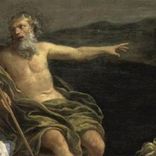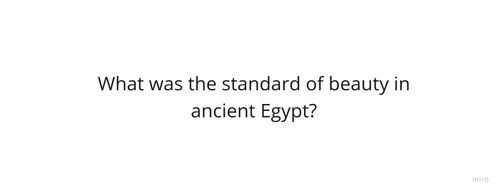What was the standard of beauty in ancient Egypt?

Jenn К
author of all this stuff
We know that the ideal female in Ancient Egypt was a tall, slender brunette with broad shoulders, flat breasts, boyish narrow hips, and long legs. The features of the ancient Egyptian woman were delicate, and eyes were especially distinguished... But in this answer, I would like to focus on men's standards of beauty and what the men of ancient Rome did to meet beauty criteria.
In ancient Egypt, youth and beauty were almost identical concepts for both women and men. The young, slender silhouette depicted in Egyptian art was once considered the ideal to which the vain people aspire. The Pharaohs, however, were sometimes portrayed posthumously as older people to emphasize their wisdom.
The Egyptians believed that the most “beautiful” skin in men was red or brown, as depicted in many artworks. Fat men are considered less attractive than slender ones. However, the most influential figures were often portrayed as strong and well-muscled.
Symmetry was also a fundamental concept of male (as well as female) beauty in Ancient Egypt.
As you know, in ancient Egypt, makeup was worn not only by women but also by men. Eye paint was usually green (made from copper) or black (made from lead). The Egyptians believed that makeup had healing properties.
Men shaved their beards and mustaches, cut their hair short (as for the priests, they completely shaved their entire bodies). At the same time, Egyptian men saw in their beards and long hairs a sign of power, and therefore wore false beards and wigs. Wigs were made of sheep’s wool, were short and long, curled, straight, and braided.
It was convenient due to climatic features - sweltering summer heat, in which the removed beards and hair were much more convenient and hygienic than natural ones.
Over time, the intricately woven beard or beard in the form of a square tuft of hair in the center of the chin has become an invariable attribute of the power of the pharaoh. Even Queen Hatshepsut, daughter of King Thutmose I, in her ceremonial royal robes, was depicted with a false beard. Also, beards were present on the images of the gods.
Men's Fashion
At the early stage of the Egyptian kingdom, men's clothing was effortless - just an apron made of thick fabric. It could have an oval, rectangular, or geometric shape - shenti. Then the apron began to be combined with a bandage of white draped fabric. The upper part of the body was decorated with a massive necklace that looked like a collar.
In the era of the Middle Kingdom, the clothing of men in Ancient Egypt changed somewhat: several shenti began to be used simultaneously. They dressed on each other, which slightly altered the silhouette.
Subsequently, men began to wear several layers of clothing, and the apron and shenti turned into something like underwear. New wardrobe items borrowed from neighboring nations appeared.
A transparent, lightweight tunics began to wear over the shenti, to which sometimes were sewn sleeves. To the bottom, this robe diverged, forming a trapezoid, and wrapped around the waist with a belt of the same thin fabric. Also, the men's clothing of Ancient Egypt began to be pleated, transforming the silhouette. Men's attire complemented by jewelry and headgear.
Thanks for reading!

Jenn К
Author bio: author of all this stuff
